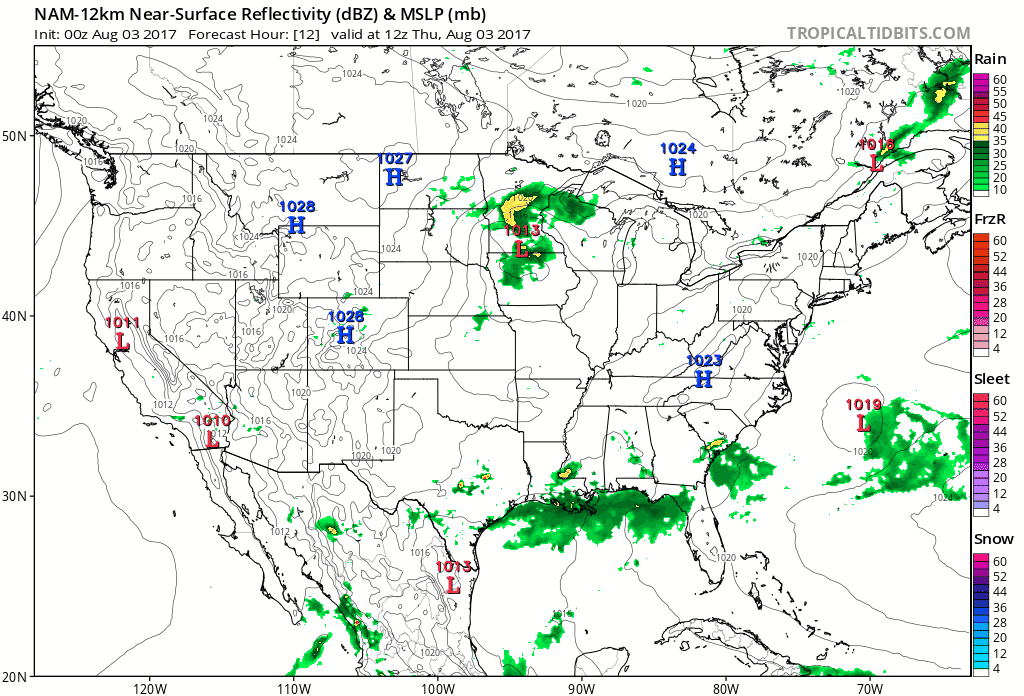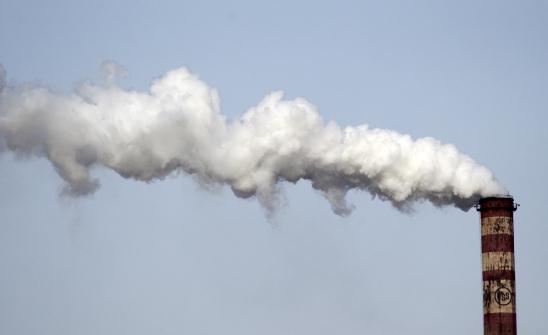83 F. average high on August 2.
88 F. high on August 2, 2016.
August 3, 1896: A violent hailstorm destroys two thirds of the crops in Swift County.

Hints of Autumn Here While Pacific Northwest Bakes
My oldest son and his wife live in Seattle, a city that's staggeringly beautiful - when the sun is out. On a recent visit I managed to embarrass myself by asking a manager at their apartment why the A/C wasn't working on a particularly hot day. He looked at me like I had horns. "Sir, this is Seattle. We don't NEED air conditioning."
Until now. In 120 years of record-keeping the mercury at KSEA has only topped 100F on 3 days. Triple-digit heat is possible today, a problem for many, since only 1 in 3 locals have A/C.
While the Pacific Northwest bakes Minnesotans may reach for jackets & sweatshirts later today as a north wind keeps the mercury in the 50s & 60s, with over an inch of rain. Typical for early October. With the Dakotas suffering through debilitating drought, remind me not to whine about puddles, especially on a weekday.
Our break from summer heat lingers the next 1-2 weeks. Weekend temperatures may not climb out of the 60s up north with mainly PM instability showers.
I'll say it, because I know what you're thinking. Summer is FAR from over. Lot's of warmth left!
* 84-hour Future Radar animation: NOAA NAM and Tropicaltidbits.com.
Blistering Heat Wave Threatens Seattle. Only 1 in 3 people have A/C? Good grief - 100F heat may be more than an inconvenience, reports The New York Times: "...But the Southwest has something Seattle doesn't: More than 98 percent of housing units in Phoenix have air-conditioning, according to the most recent American Housing Survey, conducted in 2015. "This is definitely not a town that was built on air-conditioning, and usually we don't need it," Dana Felton, a National Weather Service meteorologist in Seattle, told The Seattle Times. "We have only hit 100 or more on three days in 120 years of keeping records, and on average we have only three 90-degree-plus days a year..."
Hazards
- Heavy rain across portions of the Northeast, Sat, Aug 5.
- Heavy rain across portions of the Central Plains, the Middle Mississippi Valley, the Lower Mississippi Valley, and the Southern Plains, Sun, Aug 6.
- Heavy rain across portions of the Central and Southern Rockies, Tue, Aug 8.
- Heavy rain across portions of the Mid-Atlantic, the Central Appalachians, and the Northeast, Mon-Tue, Aug 7-Aug 8.
- Heavy rain across portions of the Lower Mississippi Valley the Southern Plains, the Middle Mississippi Valley, Mon-Tue, Aug 7-Aug 8.
- Heavy rain across portions of the Southeast, Tue, Aug 8.
- Much above normal temperatures across portions of the Pacific Northwest, the Northern Rockies, and the Northern Great Basin, Sat-Sun, Aug 5-Aug 6.
- Much above normal temperatures across portions of the Pacific Northwest and the Northern Rockies, Mon-Tue, Aug 7-Aug 9.
- Flooding occurring or imminent across portions of the Middle Mississippi Valley, the Great Lakes, and the Upper Mississippi Valley.
- Heavy rain across portions of the Central Plains, the Middle Mississippi Valley, the Lower Mississippi Valley, and the Southern Plains, Thu-Sat, Aug 10-Aug 12.
- Heavy rain across portions of mainland Alaska, Tue, Aug 8.
- Slight risk of much above normal temperatures for portions of California, the Central Great Basin, the Pacific Northwest, the Northern Rockies, and the Northern Great Basin, Thu-Sun, Aug 10-Aug 13.
- Moderate risk of much above normal temperatures for portions of the Northern Great Basin, Thu-Sat, Aug 10-Aug 12.
- Severe Drought across the Central Plains, the Northern Plains, Hawaii, the Middle Mississippi Valley, California, the Southern Plains, and the Southwest.
Wheat Prices Fall as Drought Worsens. Todd Hultman has an update at The Progressive Farmer; here's an excerpt: "Heading
into August, we have had plenty to talk about in grains this year. But
the king of price moves so far has been Minneapolis wheat, where drought
in the northwestern Plains wreaked havoc with this year's spring wheat
crops. The shorthand explanation is that drought caused spring wheat
prices to go higher. That is true, but beware of a common trap that
comes with that easy explanation. For producers and traders both, this
year's spring wheat rally offers a good example of what to expect from
prices in drought situations..."
Image credit: "This
chart compares September Minneapolis wheat prices in 1988 and 2017 --
two years when drought was a serious problem in the northwestern Plains.
In 1988, prices peaked long before drought conditions got better and
the same appears to be happening in 2017." (Source: DTN ProphetX).
Photo credit: "Grand Caillou Elementary School is surrounded by floodwater in September 2008 after Hurricane Ike. Repeat flooding forced the school to close and move to higher ground." The Courier and Daily Comet/File.
Navy Testing Small Robotic Drones to Monitor Hurricanes and Natural Disasters. A story at Daily Mail Online made me do a double-take: "The
U.S. Navy is testing tiny robot drones that fly in swarms like cicadas
to collect data. The CICADs - or 'close-in covert autonomous disposable
aircrafts - are designed to be cheap enough that a bunch can be dropped
simultaneously from the sky and even into storm conditions like
hurricanes. The Naval Research Lab has been working on the technology in
various ways since 2011, but the focus of this specific iteration - MK5
- is a shape that would allow them to be stackable..."
Tesla Surprises With 310-Mile Range Model 3. Here's a clip from ThinkProgress: "...The
car makes Tesla the leader in “price-per-mile of vehicle range.” In
fact, nobody but Tesla sells a 300-mile range electric car, and
Bloomberg’s Tom Randall calls it
“a jaw-dropping new benchmark for cheap range in an electric car.” OK,
“cheap range” may not be the perfect phrase for a car sold at these
prices — but Tesla is really competing with the high-end of the mass
market cars. “BMW and Mercedes should be concerned,” Bloomberg warns..."
Image credit: "The unexpectedly sleek and button-free dashboard of Tesla’s Model 3." CREDIT: Tesla.

Venice, Invaded by Tourists, Risks Becoming "Disneyland on the Sea". Is it possible to love a place - to death? Here's an excerpt from The New York Times: "...If
you arrive on a big ship, get off, you have two or three hours, follow
someone holdinig a flag to Piazzale Roma, Ponte di Rialto and San Marco
and turn around," said Dario Franceschini, Italy's culture minister,
who lamented what he called an "Eat and Flee" brand of tourism that had
brought the sinking city so low. "The beauty of Italian towns is not
only the architecture, it's also the actual activity of the place, the
stores, the workshops," Mr. Franceschini added. "We need to save its
identity." The city's locals, whatever is left of them anyway, feel
inundated by the 20 million or so tourists each year..."
Photo credit: "Tourists taking gondolas in front of the Ponte della Paglia in Venice." Andrew Testa for The New York Times.
The Case of "The Incredible Shrinking Airline Seat" is Finally Being Investigated. To which we raise our collective hands and shout HALLELUJAH! Yahoo Finance reports: "These
days, airlines get to decide how much legroom they give passengers. But
a new court order is pressuring aviation officials to set a mandate for
seat size. On July 28, judges on the United States Court of Appeals for the District of Columbia called out the Federal Aviation Administration (FAA), urging it to review what one judge called, “The Case of the incredible Shrinking Airline Seat.”
The court order was actually inspired from a petition originally filed
by Flyers Rights in 2015. In that document, the consumer advocacy group
raised concerns over the safety of passengers if seats continued to
decrease in size. They believe that passengers wouldn’t be able to
swiftly vacate a plane in an emergency, because the cabin is so cramped
with seats. The petition also points to health concerns, like deep vein
thrombosis, which can occur if blood flow is restricted in the leg..."
File photo credit: "Take-Off Runway 26 with Pdt Donald Trump on board." Thierry Bourgain.
Photo credit: "Eclipse watchers at the Empire State Building, New York, 1932." AP Images

TODAY: Cool, soaking rain, heavy at times. Winds: NE 10-15. High: 65 (50s up north)
THURSDAY NIGHT: Rain tapers to showers. Low: 55
FRIDAY: Cool, damp start, then slow clearing. Winds: NW 8-13. High: 75
SATURDAY: Some AM sun, few PM showers. Winds: NW 8-13. Wake-up: 57. High: 73
SUNDAY: Best chance of showers after lunch. Winds: NW 8-13. Wake-up: 58. High: 74
MONDAY: Plenty of sunshine, milder. Winds: NW 8-13. Wake-up: 57. High: 77
TUESDAY: Warm sun, late-day T-storms. Winds: SW 10-20. Wake-up: 62. High: 82
WEDNESDAY: Unsettled, leftover showers possible. Winds: NW 8-13. Wake-up: 60. High: 74
Climate Stories...
Video Shows Global Warming in More Than 100 Countries. Visualizing data trends is always challenging, but this is particularly effective. Vox explains: "Lipponen, a researcher at the Finnish Meteorological Institute, used publicly available data
from NASA to demonstrate the rising temperatures across the world. This
isn’t the first time the story of global warming has been told with the
help of a mesmerizing graphic. Last year, Brad Plumer wrote for Vox
about a viral GIF created by climate scientist Ed Hawkins, and David Roberts wrote about a set of clever climate GIFs inspired by the one Hawkins made..."
Image credit: "View of the A68 iceberg on the 30 July 2017, taken from a European Copernicus Sentinel-1 satellite image." Photograph: A. Fleming, British Antarctic Survey.

Graph credit: "Total solar irradiance data (red) and linear trend (orange) since 1950 from the Laboratory for Atmospheric and Space Physics Solar Irradiance Data Center at the University of Colorado." Illustration: Dana Nuccitelli.
Seas Rises, Trees Die. Climate Change Before Your Eyes. ABC News reports: "They're
called "ghost forests" — dead trees along vast swaths of coastline
invaded by rising seas, something scientists call one of the most
visible markers of climate change.
The process has occurred naturally for thousands of years, but it has
accelerated in recent decades as polar ice melts and raises sea levels,
scientists say, pushing salt water farther inland and killing trees in
what used to be thriving freshwater plains. Efforts are underway
worldwide to determine exactly how quickly the creation of ghost forests
is increasing. But scientists agree the startling sight of dead trees
in once-healthy areas is an easy-to-grasp example of the consequences of
climate change. "I think ghost forests are the most obvious indicator
of climate change anywhere on the Eastern coast of the U.S.," said
Matthew Kirwan, a professor at Virginia Institute of Marine Science who
is studying ghost forests in his state and Maryland. "It was dry, usable
land 50 years ago; now it's marshes with dead stumps and dead trees..."
Photo credit: "In
this July 16, 2017, photo, the sun rises on a "ghost forest" near the
Savannah River in Port Wentworth, Ga. Rising sea levels are killing
trees along vast swaths of the North American coast by inundating them
in salt water. The dead trees in what used to be thriving freshwater
coastal environments are called “ghost forests” by researchers. (AP Photo/Stephen B. Morton).
Map credit: "Estimates for mortality due to fine particulate matter in 2100. Orange and red shading indicate areas where mortality will increase by thousands or tens of thousands, respectively. Light blue and dark blue show where mortality will decrease by thousands or tens of thousands, respectively." Map by Silva RA et al., Nature Climate Change, 2017.
Mysterious Craters Blowing Out of Russia Could Mean Trouble For the Entire Planet. Again, what could possibly go wrong? Here's an excerpt from MSN.com: "In northern Siberia, rising temperatures are causing mysterious giant craters — and even more dire consequences could be in store, say climate scientists. The Russian province's long-frozen ground, called permafrost, is thawing, triggering massive changes to the region's landscape and ecology. It could even threaten human lives. "The last time we saw a permafrost melting was 130,000 years ago. It's a natural phenomenon because of changes in the earth's orbit," said professor of earth sciences at the University of Oxford, Dr. Gideon Henderson. "But what is definitely unprecedented is the rate of warming. The warming that happened 130,000 years ago happened over thousands of years … What we see happening now is warming over decades or a century..."
Photo credit: CNBC.
No comments:
Post a Comment